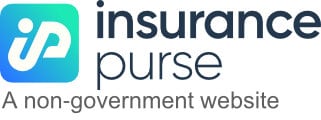Navigating the complexities of Medicare and Prescription Drugs can be challenging, but understanding how Medicare Part D works is essential for making informed decisions about your healthcare. In this article, we’ll break down everything you need to know about Medicare Part D, from choosing the best prescription drug plan to managing your medication costs effectively.
What is Medicare Part D?
Medicare Part D is the prescription drug coverage component of Medicare. It helps cover the cost of prescription medications, which is vital for maintaining your health and managing chronic conditions. Medicare and Prescription Drugs are crucial topics for anyone enrolled in Medicare, as these benefits can significantly impact your healthcare expenses.
How to Choose the Right Part D Plan
Choosing the right Medicare Part D plan can feel overwhelming, but it doesn’t have to be. Here are some key steps to help you make an informed choice:
- Evaluate Your Medication Needs: Make a list of all the medications you take regularly. Include their names, dosages, and how often you take them. This list will help you compare plans to see which one covers your medications at the lowest cost.
- Compare Plan Formularies: Each Part D plan has a formulary, which is a list of covered medications. Make sure the plans you are considering cover your prescriptions. Formularies can vary, so it’s important to check this carefully.
- Consider the Total Cost: Don’t just look at the monthly premium. Consider other costs such as deductibles, copayments, and coinsurance. The plan with the lowest premium might not be the most cost-effective if it has higher out-of-pocket costs for your medications.
- Check Pharmacy Networks: Some plans have preferred pharmacies where you can get medications at a lower cost. Make sure your preferred pharmacy is in the plan’s network, or be willing to switch to a network pharmacy to save money.
- Look at the Plan Ratings: Medicare rates Part D plans based on quality and performance. Higher-rated plans often provide better customer service and fewer issues.
Managing Your Prescription Drug Costs
Managing prescription drug costs is a critical aspect of navigating Medicare and Prescription Drugs. Here are some tips to help you keep your medication expenses under control:
- Use Generic Medications: Generic drugs are typically much cheaper than brand-name versions. Ask your doctor if there are generic alternatives to your prescribed medications.
- Explore Discount Programs: Many pharmacies offer discount programs for prescription drugs. Additionally, some pharmaceutical companies provide assistance programs for those who cannot afford their medications.
- Review Your Plan Annually: Your medication needs may change over time, and so do the Part D plans. During the Medicare Annual Enrollment Period (AEP), review your current plan and compare it with others to ensure you still have the best coverage.
- Consider Mail-Order Pharmacies: Some plans offer lower costs for medications ordered through mail-order pharmacies. This option can also provide convenience, as medications are delivered directly to your home.
Common Challenges and How to Overcome Them
Even with careful planning, you might face some challenges with Medicare and Prescription Drugs. Here’s how to tackle them:
- The Coverage Gap (Donut Hole): The coverage gap, also known as the donut hole, is a temporary limit on what the drug plan will cover. Once you and your plan have spent a certain amount on covered drugs, you may have to pay more out-of-pocket until you reach the catastrophic coverage phase. To prepare for this, set aside some extra funds if you expect to hit the coverage gap.
- Prior Authorization: Some medications may require prior authorization from your Part D plan. This means your doctor will need to obtain approval from the plan before the medication is covered. Work closely with your healthcare provider to ensure all necessary paperwork is completed promptly.
- Step Therapy: This is a process where you must try less expensive drugs before “stepping up” to more costly alternatives. Understand your plan’s step therapy requirements and work with your doctor to navigate this process.
- Formulary Changes: Part D plans can change their formularies, which means a medication covered this year might not be covered next year. Stay informed about any changes to your plan’s formulary and adjust accordingly.
Final Words
Navigating Medicare and Prescription Drugs doesn’t have to be a daunting task. By understanding how Medicare Part D works, choosing the right plan, and managing your medication costs effectively, you can ensure that you have the coverage you need at a price you can afford. Remember to review your plan annually and stay proactive about managing your prescription drug expenses. With the right approach, you can make the most of your Medicare benefits and maintain your health without breaking the bank

















